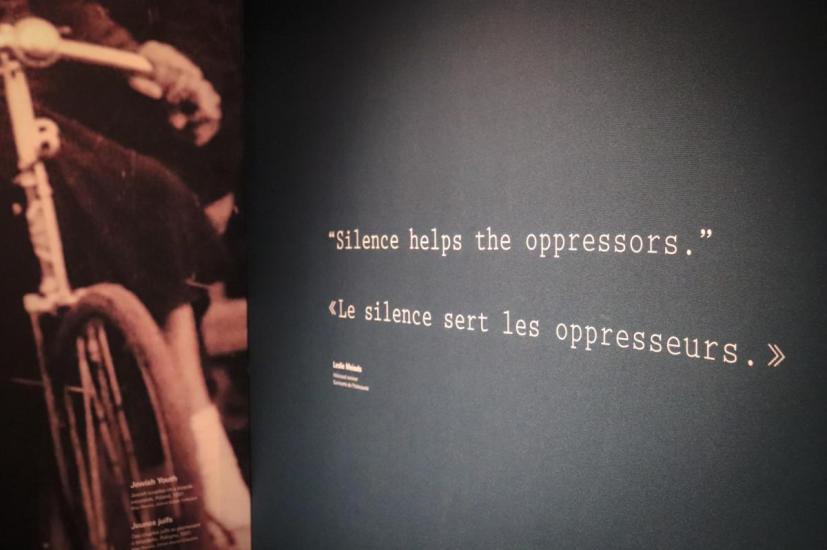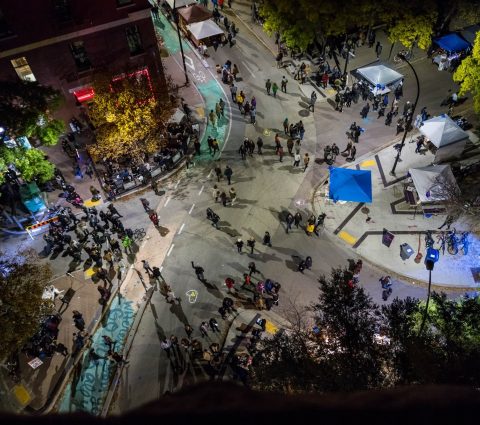- Things To Do
- Manitoba Events
- Food & Drink
-
Places To Go
- Winnipeg
- Churchill
- Eastern Region
- Central Region
- Interlake Region
- Parkland Region
- Western Region
- Manitoba North
- Must-See Destinations
-
Itineraries
- Island Getaway on the Prairies
- Adventure From Here on Out
- Wheat City Wanderings in Brandon
- Escape to the water and the wild
- St. Boniface Winter: Passion and History
- Follow the path to a story in Neepawa
- Unleash your inner Viking this winter
- Explore Clear Lake This Winter Like Never Before
- Breathe in the Whiteshell this winter
- Go North for a boreal forest escape
- Treaty Areas
- Where To Stay
- Trip Essentials
- #ExploreMB Blog
Navigation Options
- Things To Do
- Manitoba Events
- Food & Drink
-
Places To Go
- Winnipeg
- Churchill
- Eastern Region
- Central Region
- Interlake Region
- Parkland Region
- Western Region
- Manitoba North
- Must-See Destinations
-
Itineraries
- Island Getaway on the Prairies
- Adventure From Here on Out
- Wheat City Wanderings in Brandon
- Escape to the water and the wild
- St. Boniface Winter: Passion and History
- Follow the path to a story in Neepawa
- Unleash your inner Viking this winter
- Explore Clear Lake This Winter Like Never Before
- Breathe in the Whiteshell this winter
- Go North for a boreal forest escape
- Treaty Areas
- Where To Stay
- Trip Essentials
- #ExploreMB Blog
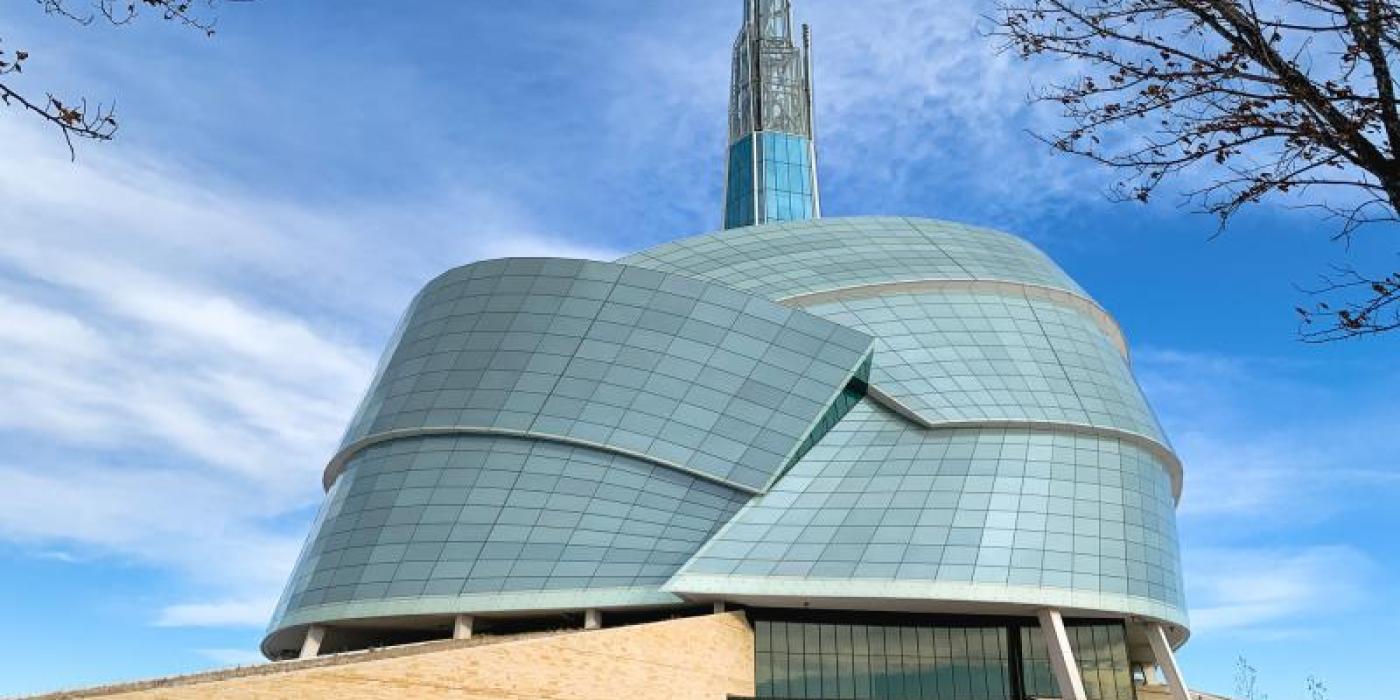
Site Maintenance
Our French website is currently being updated and some content is appearing in English instead of French. We are working to resolve this quickly. Thank you for understanding.
More InfoWhy a visit to the Canadian Museum for Human Rights is a must on any Winnipeg itinerary
Posted: December 06, 2019 | Author: Nisha Tuli
The Canadian Museum for Human Rights stands alone as the only museum in the world dedicated to the topic of human rights around the globe. The first national museum in Canada to be built outside of the capital region, it is both a reminder of and homage to the darkness of days past and a beacon of hope towards a brighter and better future.
Built on ancestral land--First Nations’ Treaty One territory and the heartland of the Metis people--it stands at the heart of Winnipeg on a historic site at the forks of the Red and Assiniboine Rivers.
A significant presence on Winnipeg’s skyline, it’s impossible to miss this glass ‘cloud’ shaped to mimic the wings of a dove as 1,300 glass panes wrap around the building. The soaring Tower of Hope rises 100 m into the air providing a 360-degree view of the entire city.
No travel itinerary or visit to Manitoba would be complete without a visit to this bucket-list museum. Featuring 12 interactive galleries, this is a museum that is far less about artifacts and far more about ideas presented through stories and technology. An often life-changing experience, visitors who come here will find themselves immersed in the stories of struggle and triumph that abound throughout the 4,300 sq. ft. of exhibit space.
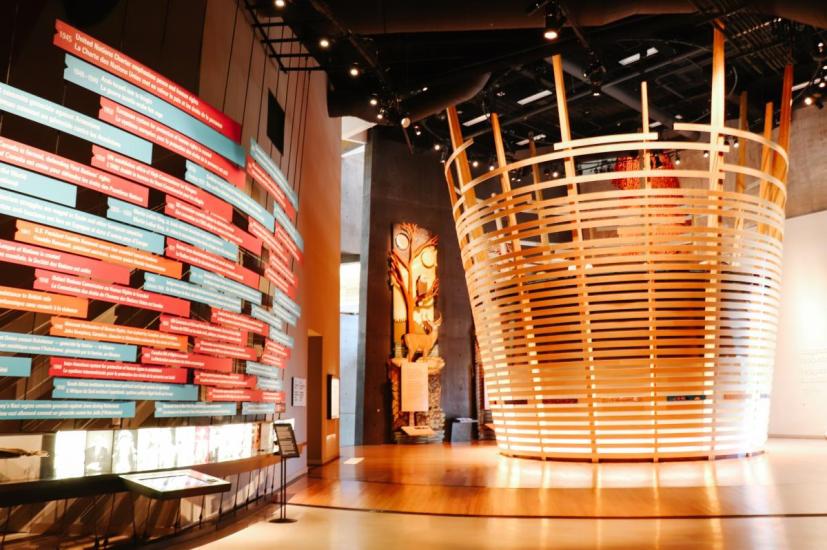
The Architecture
One of the museum’s most notable features is its thoughtful architecture. Designed by Antoine Predock--chosen in one of Canada’s largest-ever juried architectural competitions—his vision was to create a building that was ‘carved into the earth and dissolving into the sky’.
- The Roots: Four ‘roots’ or arms ground the building into the earth, representing humanity’s connection to the land. These foundations are clad in 400-million-year-old limestone.
- The Landscaping: The grounds around the museum are covered in 15 species of Prairie grasses, all native to the area. It is the largest urban revival of natural flora in Western Canada.
- The Ramps: One of the most striking features inside the museum are the 800 meters of glowing ramps that lead you up through the building. Clad in Spanish alabaster and lit from within, they represent a path of light through darkness.
- The Basalt: Situated in the centre of the museum is the Garden of Contemplation. A quiet and serene interlude where pools of water are surrounded by basalt rock. Inspired by the Giant’s Causeway of Northern Ireland, the basalt was chosen as the material can be found anywhere in the world, symbolizing equality.
- The Sustainability: This is a high-performance building is LEED Silver certified. This green building includes a green roof, harvests rainwater for use in bathrooms and the glass on the outside is covered in a dot pattern of frits to reduce solar heat and reduce the need for artificial light sources.
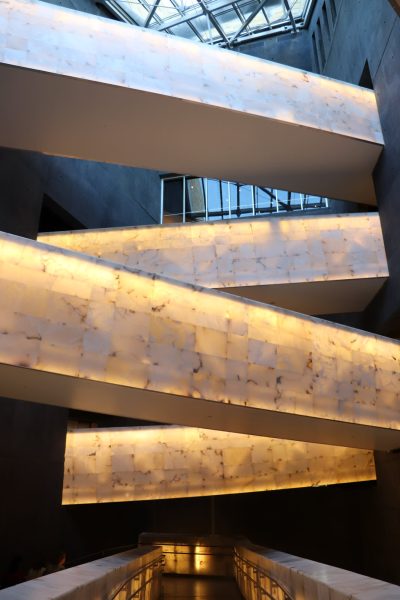
The Family Perspective
While the subject matter of the museum can be serious in tone, the CMHR is the perfect place to introduce children to the idea of inclusion, equality and the rights of others. Several of the exhibits were designed for young minds, offering easy ways to educate them about these important topics.
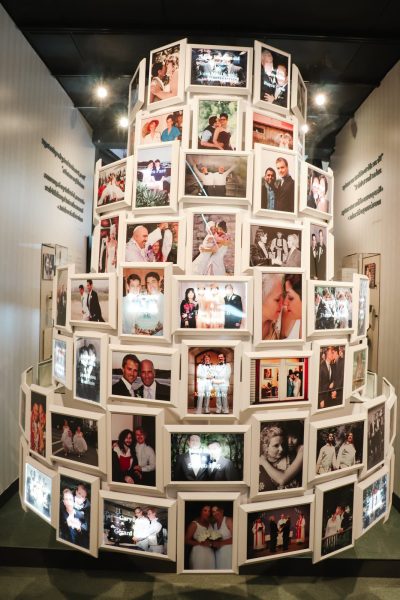
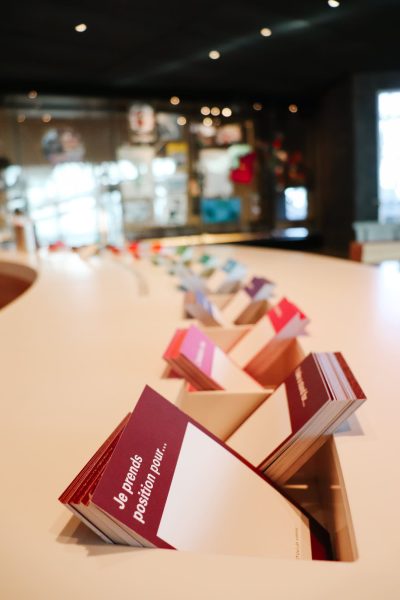
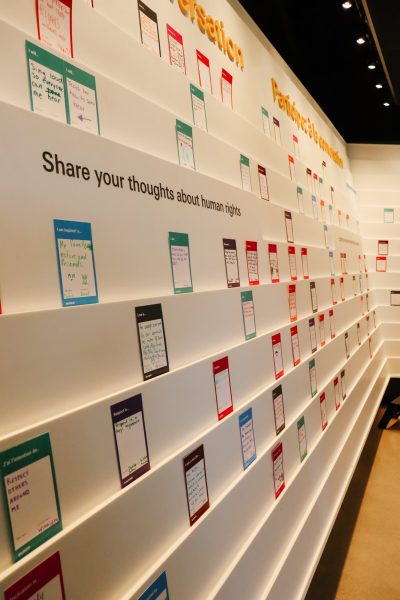
- Canadian Journeys Gallery: kids can play with a motion-sensor light game. Standing on the lit circle, they can see how their ‘bubble’ of light interacts with others and how it grows larger as people join together, symbolizing the power of inclusion and cooperation.
- Actions Count Gallery: a digital interactive table allows kids to interact with animated characters to show how young people can put ideas into action. Players make choices about tough topics like bullying at school.
- Indigenous Perspectives Gallery: a 360-degree theatre plays a family-friendly video where one of the narrators is a young girl. Kids can find themselves identifying with her as they learn about Indigenous rights and responsibilities.
- Rights Today Gallery: kids as are invited to consider how the everyday objects they use and rely on, like cell phones and water bottles, are intrinsically tied to human rights.
- Inspiring Change Gallery: colourful pens and cards are laid out where everyone is encouraged to create a personal message about human rights and the change they hope to be in the world.
The Wonder of Technology
Since the museum does not house objects behind glass, technology is an integral part of the experience. Through creative and innovative design, the museum brings together the tradition of storytelling with current tech to create a completely one-of-a-kind museum experience.
Technology has also made this one of the most accessible museums in the world, ensuring that anyone who comes here enjoys a rich and fulsome experience.
- iBeacons: the largest installation in the world allows blind and low-vision visitors to access information with an app, giving them a path to the museum's content they otherwise wouldn’t have.
- Welcome Projection: upon entering the museum, one of the first things you’ll notice is huge wall where ‘people’ are writing messages of welcome in 36 languages. These lifelike projected silhouettes are mesmerizing to watch.
- ‘Rights in Courts’ interactive circle: this interactive exhibit replays legal cases on video screens where people are able to ‘vote’ to share their own views and verdicts.
- Interactive Study Table: this huge light table can be used by 20 people at a time as they delve into the history of genocide and mass atrocity.
- Standing Digital Books: floor-mounted monitors display video stories about human rights activism that visitors control by pointing.
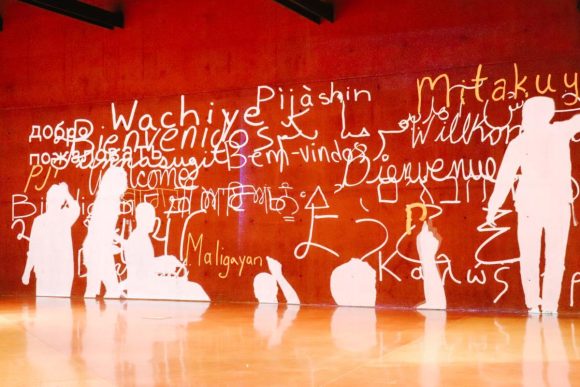
To plan your visit to the Canadian Museum for Human Rights, visit humanrights.ca.
Travel Manitoba was hosted by the Canadian Museum for Human Rights, who did not review or approve the content of this story. #tmbpartner
